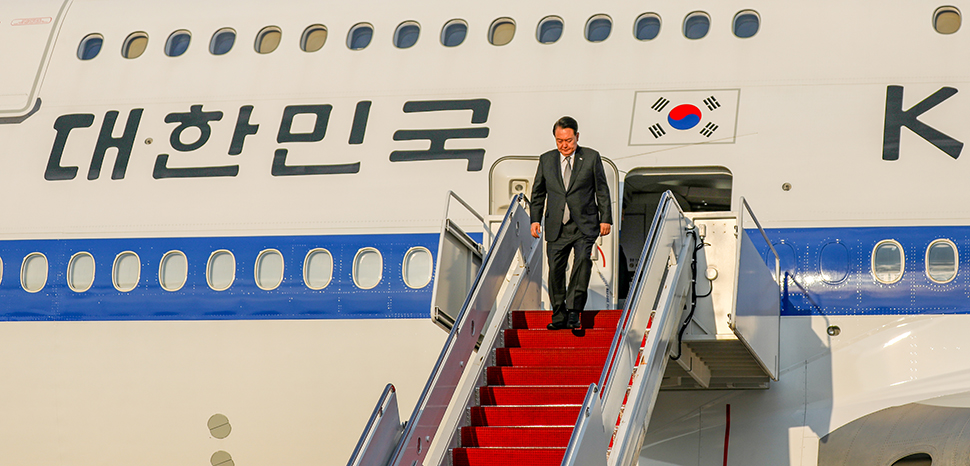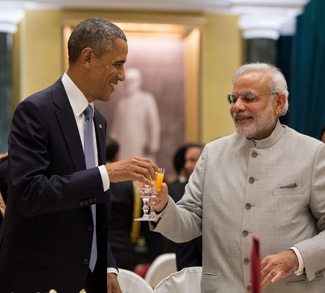As the old Arabian proverb goes, “a promise is a cloud, fulfillment is rain.” Overtures over the years to improve Japan-South Korea ties have been attempted and failed, tarnished time after time over bitter historical memory over Japan’s colonial rule over Korea between 1910 and 1945.
The late former Japanese Prime Minister Shinzo Abe sought to improve ties over security concerns about North Korean provocation, but like his counterpart, South Korean Prime Minister Lee Nak-yon in the end, failed. In 2008, South Korean President Lee Myung-bak also wanted to improve ties with Tokyo and then-Prime Minister Yasuo Fukuda, but that too, predictably failed.
Now both countries, sharing concerns over the growing military aggression shown by China and other adversaries over the past decade or so, have again made promises that have yet to produce the proverbial rain. Since taking power in 2022, South Korean President Yook Suk-Yeol has demonstrated the need to restore ties, highlighting Tokyo’s current national security contributions rather than speaking to its imperial past.
But as usual, historical grievances are getting in the way. Just a few days before the end of 2023, Japan made a diplomatic complaint over South Korean military drills in preparation for the defense of the disputed Takeshima/Dokdo islands. A month earlier, Japanese Foreign Minister Yoko Kamikawa criticized a decision by a Seoul court that ruled in favor of “comfort women” who are seeking compensation from Japan, as both countries recently held talks over the launch of a North Korean military spy satellite.
This is just part and parcel of Japan-South Korea bilateral bickering as regional security challenges become more pronounced. Despite some progress regarding economics, both Seoul and Tokyo must find a way to resolve their long-standing disputes in pursuit of a more important joint security objective—containing regional aggression.
It’s not that there has been zero progress. Both joined the United States in condemning China’s “dangerous and aggressive actions” in the South China Sea last August. Each promised to consult one another during crises and coordinate responses. But time is of the essence in more ways than one. Both countries need to capitalize on the recent wave of public sentiment, which should alert leaders of the increased urgency that Chinese pressure weighs upon their respective populations. South Korean public resentment toward China has been growing for years. A 2022 Central European Institute for Asian Studies (CEIAS) survey found that South Korea and Japan had the highest negative perception of China in the Indo-Pacific region, at 81 and 69 percent respectively, far ahead of India at 57 percent. This is far higher than in 2016. 94 percent of Japanese and South Koreans also have zero confidence in Russia or the leadership of Vladimir Putin, according to a July 2023 Pew Research Center survey.
Coordination and communication between Seoul and Tokyo must also strengthen as there is broad consensus that the long-held policy of strategic deterrence is failing due to exponential growth in North Korean weapons development, evidenced by more than 80 ballistic missile test launches since 2022. Complicating matters is that both countries are equally challenged by the need for a new strategic approach, and it becomes worse when Chinese support of Pyongyang is added to the mix. The United States has been preoccupied by its own rivalry with Beijing, which heightens the potential for North Korea to use it as a means of sowing additional instability.
Both face security challenges of the modern era and development challenges related to an aging Asia. China has been accused of stealing the intellectual property of “Five Eyes” countries, in addition to expanding the scope of its espionage due to its recently-passed counterespionage law, a major concern for Japanese firms operating in China. Each also faces rapidly declining birthrates, which pose recruitment challenges for Tokyo, evidenced by the inability of the JSDF to meet targets, which fell by 62 percent in 2022. South Korea faces very similar issues, even with conscription.
The key stumbling blocks are historical grievances, which are kept alive by the recalcitrance of Korean and Japanese leaders. For instance, over a million Koreans were subjected to slave labor, including the “comfort women” forced into sexual servitude. The atrocities eventually played out in South Korean courts, where Nippon Steel & Sumitomo Metal Corporation were sued. However, the Japanese government accused then-President Moon Jae-in of “shifting Seoul’s responsibility to Japan” and then-Foreign Minister Taro Kono even suggested that Moon somehow disrupt the South Korean Supreme Court decision.
However, the cracks in relations between the two countries are ostensibly generational, as Japanese manga and anime are extremely popular in Korea, as is “K-Pop” in Japan. There have been countless calls over the course of many decades urging the resolution of years of distrust and resentment, both in the name of human rights and due to mounting security threats, from China, North Korea, and Russia. Ultimately though, if the political will is not summoned by entrenched leaders, adversaries will find new and creative ways of exploiting their fragile relationship. Both cannot afford to wait for another generation to finally bury the proverbial hatchet. The time is now.
The views expressed in this article belong to the authors alone and do not necessarily reflect those of Geopoliticalmonitor.com.




